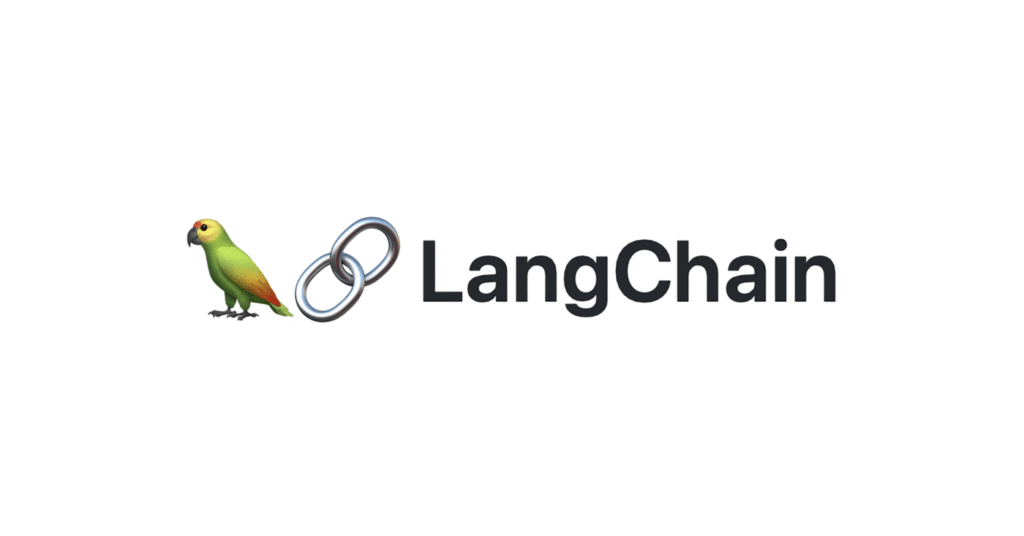In the ecosystem of artificial intelligence frameworks, LangChain has established itself as an essential reference. Let’s break down this library that simplifies the creation of complex AI applications.
What is LangChain?
LangChain is an open-source framework designed to build applications powered by language models (LLMs). Its goal: abstract away technical complexity and allow developers to quickly build sophisticated AI solutions.
The framework offers a modular approach based on reusable components that can be chained together—hence the name « LangChain ». This architecture makes it possible to build complex workflows by combining simple functional blocks.
Core Components
LLMs and Chat Models: A unified interface to interact with various models (OpenAI, Anthropic, Hugging Face, local models). No need to handle each API’s quirks.
Prompts and Prompt Templates: Centralized prompt management with dynamic templating, versioning, and optimization. Prompts become reusable and testable objects.
Chains: Sequences combining LLMs, prompts, and business logic. From simple Q&A chains to complex multi-step workflows.
Agents: Autonomous systems capable of reasoning and using external tools to perform tasks. The AI becomes proactive instead of reactive.
Memory: Persistent management of conversational context. Supports different memory types (short-term, long-term, summarized, vector-based).
Retrievers: Interfaces for retrieving information from vector databases, making RAG systems easy to implement.
Highlighted Use Cases
Conversational Chatbots: Quickly build assistants with contextual memory and access to external knowledge bases.
RAG Systems (Retrieval-Augmented Generation): Question-answering apps over document corpora, with semantic search and contextualized generation.
Autonomous Agents: AI capable of using APIs, databases, or business tools to independently complete complex tasks.
Document Analysis: Automated processing of PDFs, information extraction, summarization, and content classification.
Content Workflows: Automated generation of articles, translation, rewriting, and optimization based on specific criteria.
LangChain Ecosystem
LangSmith: Monitoring and debugging platform for LangChain apps in production. Full execution traceability and detailed metrics.
LangServe: Simplified deployment of LangChain chains as REST APIs with an auto-generated web interface.
LangGraph: Extension for building multi-agent applications with complex workflows and shared states.
Community Hub: A library of prompts, chains, and agents shared by the community. Speeds up development with pre-tested components.
Integrations and Connectors
LangChain shines through its rich ecosystem of integrations:
AI Models: Native support for OpenAI, Anthropic, Google, Cohere, Hugging Face, and open-source models via Ollama.
Vector Databases: Chroma, Pinecone, Weaviate, Qdrant, FAISS for semantic search applications.
Data Sources: Connectors for PDF, Word, CSV, SQL/NoSQL databases, web APIs, and many proprietary formats.
External Tools: Integration with Google Search, calculators, REST APIs, dev tools, and cloud services.
Technical Architecture
The framework follows a layered architecture:
Abstraction Layer: Unified interface hiding the complexity of different AI providers.
Composition Layer: Mechanisms for flexibly chaining and orchestrating components.
Execution Layer: Optimized runtime with support for async operations and caching.
Persistence Layer: State management, conversational memory, and embedding storage.
Strategic Advantages
Rapid Development: Accelerated prototyping thanks to prebuilt components and extensive documentation.
Flexibility: Modular architecture lets you build custom solutions without starting from scratch.
Mature Ecosystem: Large community, many integrations, and abundant learning resources.
Scalability: From prototype to production, with dedicated tools for each development phase.
Implementation Considerations
Learning Curve: While simplified, LangChain still requires understanding of core AI concepts for optimal use.
Performance: Abstractions can introduce latency. Profiling is important for performance-critical apps.
Versioning: Rapidly evolving framework with occasional breaking changes. Dependency management is crucial.
Customization: For very specific needs, you might need to extend or bypass some abstractions.
The Future of LangChain
LangChain continues to evolve with the progress of generative AI. The focus is on production readiness, performance, and multi-modal agent integration. The framework positions itself as the go-to infrastructure for enterprise-grade AI applications.
The emergence of LangGraph shows a clear ambition to support increasingly complex use cases—particularly in autonomous agents and multi-step workflows.
LangChain truly democratizes access to advanced AI technologies, enabling development teams to focus on business value rather than technical plumbing.
#LangChain #AI #MachineLearning #LLM #Framework #Python #OpenSource

